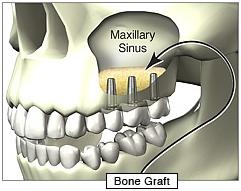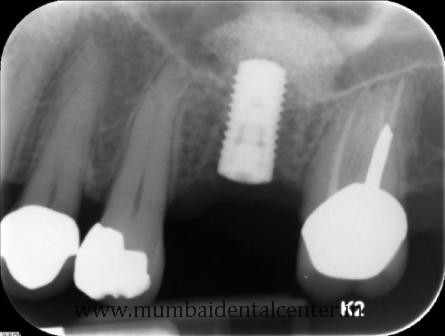A sinus lift is a bone-grafting procedure that's sometimes required in instances where the quantity of bone found in a patient's upper jaw (in the region originally occupied by their bicuspid or molar teeth) is inadequate to accommodate the length of a dental implant.
What It's Used For
A sinus lift is done when there is not enough bone height in the upper jaw, or the sinuses are too close to the jaw, for dental implants to be placed. There are several reasons for this :-
- Many people who have lost teeth in their upper jaw — particularly the back teeth, or molars — do not have enough bone for implants to be placed. Because of the anatomy of the skull, the back of the upper jaw has less bone than the lower jaw.
- Bone may have been lost because of periodontal (gum) disease.
- Tooth loss may have led to a loss of bone as well. Once teeth are gone, bone begins to get resorbed (absorbed back into the body). If teeth have been missing for a long time, there often is not enough bone left to place implants as the floor of the sinus tends to drift down.
- The maxillary sinus may be too close to the upper jaw for implants to be placed. The shape and the size of this sinus varies from person to person. The sinus also can get larger as you age.

Sinus lifts have become common during the last 15 years as more people get dental implants to replace missing teeth
The sinus lift is a surgical procedure. The specific technique that the dentist utilizes can vary but traditionally the procedure has been performed as follows :-
- We make an incision in the patient's gum tissue on the cheek side of their upper jaw in the area where the placement of the dental implant is planned.
- The exposed bone is cut in a fashion where a "trap door" of bone (hinged at the top) is created. This movable section of bone is then pushed gently inward and upward into the sinus cavity. This bone movement caries the sinus membrane (attached to it) along with it, thus "lifting" the membrane (and hence the sinus floor) to a new, higher level.The empty space underneath the lifted sinus membrane is then packed with bone-graft material, thus providing the new bone into which a tooth implant can be placed.
- Once the bone-graft material has been positioned the gum tissue is stitched closed.
- In some instances, it can be possible that we will place the dental implant at the same time that the sinus lift is performed.
In certain cases, however, we will allow a healing period of six to nine months before the dental implant is placed. The specific time frame allowed for healing is dependent upon the type of bone-graft material that has been utilized.
What types of bone-graft materials are used with the sinus lift procedure?
Several different types of bone-graft materials can be utilized with sinus lift surgery.
- In some cases, the patient's own bone will be used, such as that harvested from another location in their mouth or else from other bones [including the hip (iliac crest) or shin bone (tibia)].
- In other instances, prepared bone (frozen bone, freeze-dried bone, demineralized freeze-dried bone), either human or from another species (i.e. bovine), can be purchased from a tissue bank for use.
- Another alternative involves the use of synthetically derived graft material such as hydroxyapatite.







